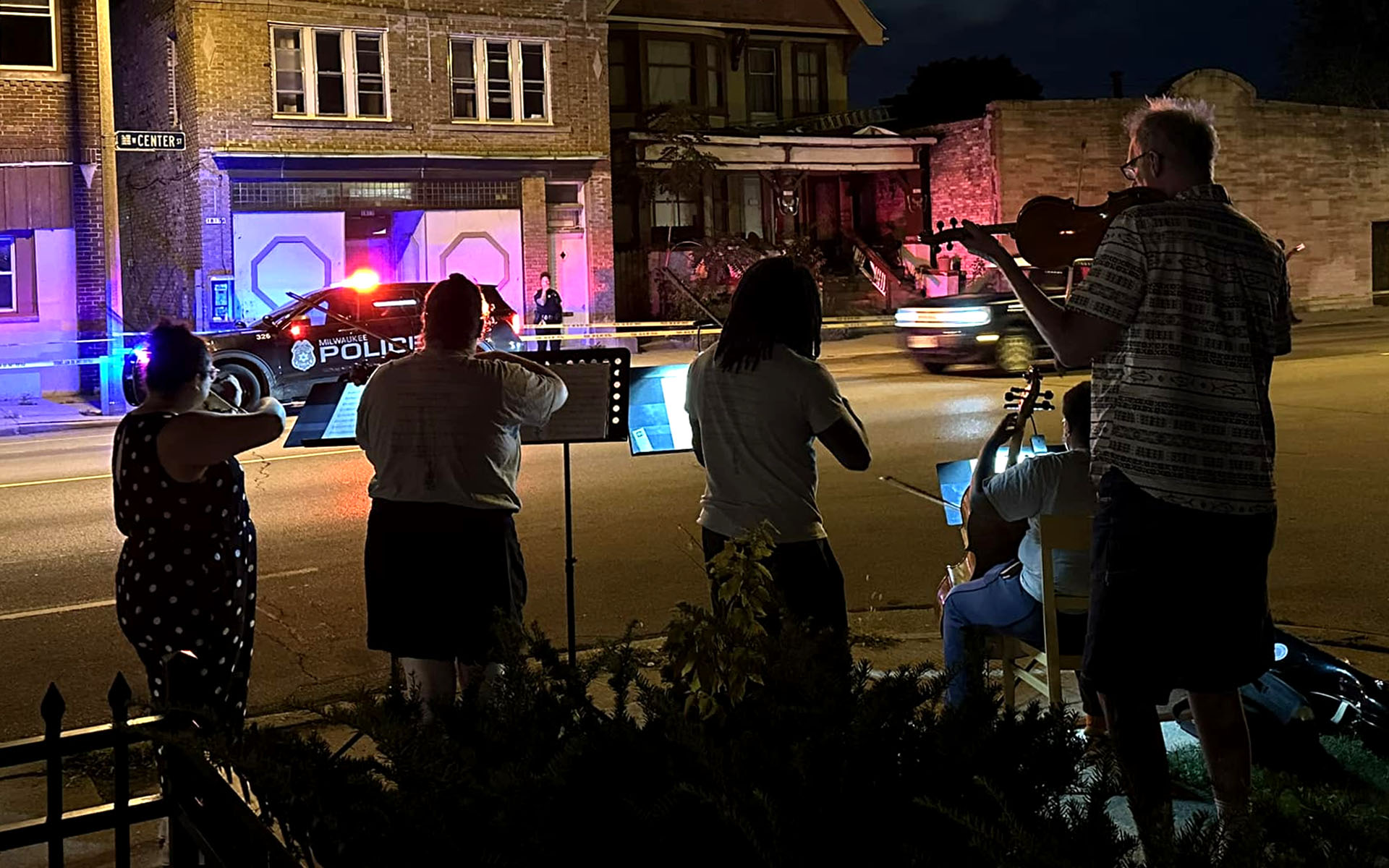How Interactive Music Responds to Player Choices in Real Time
The following information on composing music for interactive media is excerpted from the Berklee Online course Interactive Scoring for Games, written by Michael Sweet, and currently enrolling.
Using interactive music in a game setting can create a score that is unique, constantly evolving, and able to move the storyline and emotional context forward. This style of musical score is contrary to the traditional linear film-scoring method of music composition. Scoring for games organizes musical events in relationship to gameplay events that are occurring in real time through choices of the player, as opposed to a pre-sequenced order. Because of this significant difference, we create scores by using several varied compositional techniques.
The interactive music techniques that I’ll describe here take longer to compose than a linear cue for a movie or television show. When scoring for games, the composer must build variability into the composition itself, so that when it’s integrated into a game, the music will change based on the player’s decisions.
It is difficult to test every possible outcome a player might encounter and
every possible music combination within a game. Video game composers need to be cognizant of the limitless possibilities and also be open to allowing their music to playback differently on each playthrough based on the players’ decisions.
Each interactive compositional technique has various advantages and
disadvantages to why you might want to choose one over another when you are scoring for games, depending on what type of game it is. In addition, many of these fundamental techniques can be combined and used together. Let’s explore some common interactive composing techniques that composers utilize in video games:
1. Horizontal Re-sequencing
Horizontal re-sequencing refers to the ability for the music to respond to
a game event by switching from one musical cue to another. The composer
can sometimes customize the way that the engine switches from one cue to
another. Some examples might include crossfading between the cues, waiting until the next downbeat or musical phrase to end before playing the next cue, or playing a musical transition to bridge the two cues.
The term horizontal re-sequencing is derived from how composers typically
look at the horizontal axis in a DAW (Pro Tools, Cubase, etc.), which represents time. Since one cue can follow another cue based on a game event, we are re-sequencing the order of the playback of those cues.
Probably the most common horizontal re-sequencing technique used in scoring for games is looping. Looping refers to the ability for a music cue to repeat itself without the player hearing any loop point. In gameplay, it allows for the music to be extended for players that may take longer to get through a level or spend more time in an area than the designers had originally intended.
2. Vertical Remixing
Vertical remixing refers to the ability to add or remove instrument layers during gameplay, like when Sonic goes into high-speed mode, and a drum loop appears on top of the current music.
This technique is commonly used more frequently when there are rapid changes between states, because adding layers to the same musical cue can be less incongruous than switching between two different cues. For instance, when players work their way through an openworld game and fight enemies, it may be too much to switch between a separate explore and battle cue. More common in scoring for games is a set of layers that fade in and out as needed by the action of the game for a smoother player experience.
Suggested Studying: Red Dead Redemption
3. Digital Signal Processing
Digital Signal Processing (or DSP for short) is a term that’s used for applying
real-time effects to the music. These effects include EQ filters, panning,
reverb, delay, distortion, and more. Games often utilize effects on the
music to enhance gameplay. In the snowboarding game SSX Tricky, the bass
frequencies are filtered out using an EQ whenever the player flies into the air after a jump. The bass returns after the player lands.
In combat games, the music is often filtered so that the high frequencies
are lowered to signal low health to the player. Other DSP effects can also be
used for dramatic effect within video games.
Suggested Studying: SSX Tricky
4. Musical Stingers
A stinger is a short musical phrase that’s played on top of the music to signal a game event to the player. Stingers are often played when a goal is reached, a player dies, or treasure is found.
When scoring for games, stingers should be written in such a way that they’re not dissonant with the current key or progression of the music. Stingers are usually played when a game event happens, but depending on the underlying musical engine, stingers can also be played on a specific beat or at the end of a musical phrase. The stinger can be an effective way of signaling prominent events to the player.
Suggested Studying: Candy Crush Jelly
EARN YOUR PROFESSIONAL CERTIFICATE IN GAME AUDIO DESIGN AND PRODUCTION
5. Instrumental and Arrangement Alteration
Another interactive music technique used when scoring for games is to change the lead instrument or ensemble based on a specific game event. This more subtle change in the music is less harsh than switching to an entirely different music cue. Changing out the lead instrument will generally leave the tempo, harmonic progression, and melodic development intact. Changing out the entire ensemble is more dramatic but similar to contemporary arranging, where different instruments take over parts in the music. Notice in the game Skyward Sword how the arrangement changes, depending on which vendor is activated during shopping. Each vendor has their own unique instrumentation.
Suggested Studying: Skyward Sword
6. Tempo Alteration
One of the earliest interactive music techniques found in scoring for games, tempo alteration began as early as the ‘70s in arcade classics like Asteroids and Space Invaders. Game events trigger tempo changes; increasing the tempo generally increases the tension in a game, while slowing it down does the opposite. In many cases this technique may not work as well with audio stems, because of the audible artifacts you hear in the tempo-manipulated audio. This technique is used more commonly when
the video game uses direct MIDI and Mod playback engines.
Suggested Studying: Super Mario Galaxy
7. Harmonic Approach, Melodic Adaptation, and Note Manipulation
The ability to change the chord or melodic progression dynamically during gameplay can be a unique way to enhance the dramatic storytelling of the game. Key and modal changes that trigger based on a game event can be very powerful during gameplay. Additionally, simple note manipulation or randomization may increase the length of time a player can listen to a piece of music before the player feels the repetition of a music cue. Although this technique is possible to harness by crossfading between audio files, it is generally used more often when the composer is able to embed standard MIDI files within the game to trigger custom virtual instruments.
Suggested Studying: Chime
8. Randomization
Randomization is another common technique used in scoring for games to
reduce repetition. Below are some ways that composers utilize randomization:
- Randomizing the order of the playback of musical phrases, changing the musical form.
- Randomizing the start point within a music cue so that it doesn’t always begin in the same section.
- Randomizing musical stingers. If the player dies a lot in the game, it may be repetitive for the player to hear the same musical stinger every time the player dies. The composer could create a variety of death stingers instead of having just a single version.
Try It
Find two examples of interactive music in a video game using YouTube gameplay walkthrough videos. Think about the technique as well as its effectiveness in the game. To avoid player commentary when searching YouTube, it helps to type “gameplay no commentary” into the search engine.
STUDY MUSIC FOR FILM, TV, AND GAMES AT BERKLEE ONLINE












